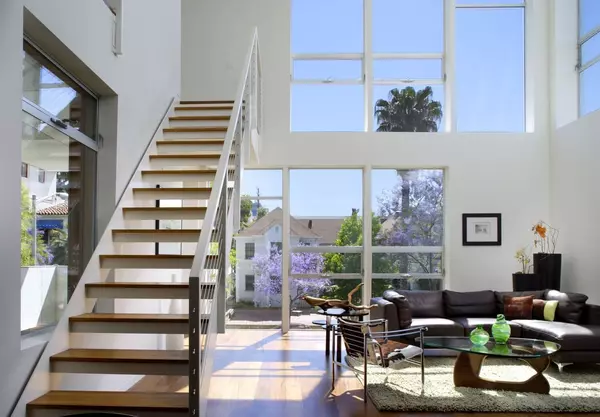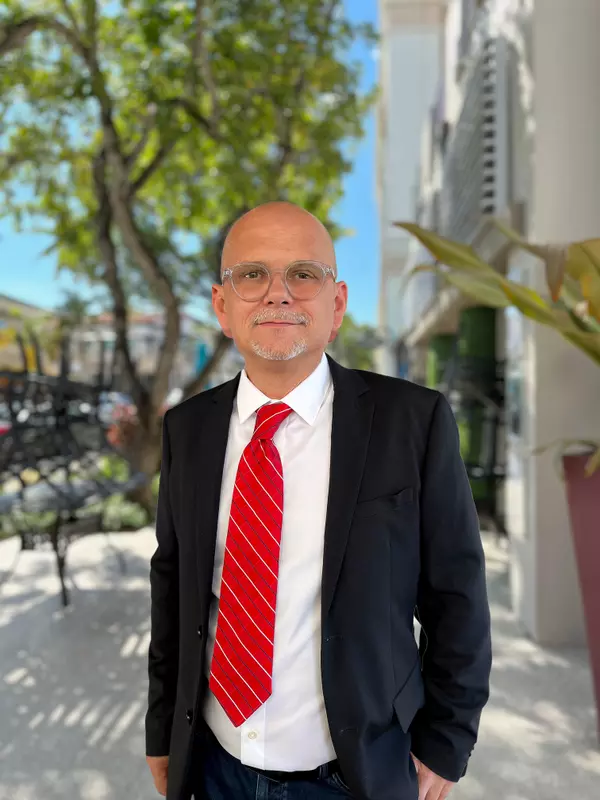Would You Give Up $200K To Keep Your Neighborhood Affordable? These DC Homeowners Did
It’s easy to blame “the system” for America’s affordability crisis: Record-low interest rates during the COVID-19 pandemic fueled a run-up in prices, new construction never fully recovered after 2008, and now a locked-in homeowner class sits atop record equity while everyone else is priced out.
But it’s harder—much harder—to take personal action against those same forces and choose to forgo as much as six figures in profit. After all, who would willingly sell their largest asset for less than it's worth?
And yet, that’s exactly what these Washington, DC, homeowners did.
Through the Douglass Community Land Trust’s Pay It Forward program, sellers are parting with their homes at as much as 25% below market value to ensure their houses remain affordable in perpetuity.
But it’s more than an act of goodwill. It’s a deliberate stand against displacement and a reimagining of what homeownership, and equity itself, can mean.
Can goodwill fix a broken housing system?
Gentrification has long been a problem for America’s cities, as wealthier, often white, home and business owners move into areas that have historically been built and enjoyed by lower-income residents and communities of color.
Ed Lazere has seen it unfold before his eyes as a longtime Washington, DC, resident and through his decades in public policy.
“At some point, the neighborhood became hot. It gentrified, and home values started to go up,” he says of the Brookland neighborhood where he lived with his wife for over 30 years. “We saw changes in who could afford to live in the neighborhood and who was moving into the neighborhood compared to when we moved in.”
He points to a 1998 article in the Washington Post that measured gentrification by cheese preference—the premise being that lower-income neighborhoods ate more Velveeta, while higher-income neighborhoods preferred brie.
At the time, his neighborhood was a near perfect split between the two cheeses. But that’s since changed.
“You didn't have to be a public policy housing professional to see this neighborhood is gentrifying,” Lazere says.
Though he and his wife bought their home in 1992 for $160,000, today, the median sold price for the neighborhood sits at $830,000. That’s the difference between needing an annual income of $94,000 and $187,000 to afford the same house, adjusting the purchase price for inflation and assuming a 20% down payment, 6.5% interest rates, and roughly $450 of other monthly liabilities (like a car loan).
That discrepancy was exactly what didn’t sit well with Lazere and his wife.
“We didn't feel good about contributing to the neighborhood gentrification, because if we sold the house for [market value] it would be a two-income, high-income, highly educated, probably white family, and it would just be part of that larger economic trend," he says. "And we just weren't comfortable with that."
So after some consideration, they opted to sell to the Douglass Community Land Trust, a nonprofit organization that Lazere knew about through his work in public policy.
The land trust’s mission is to “enable the inclusive and equitable development and preservation of permanently affordable housing, local small business, and other public assets through community ownership of land, today,” according to their website.
They do so through a variety of programs, including the “Pay it Forward Program,” which the Lazeres chose when selling their home. It works by removing the land from the speculative market to preserve long-term affordability.
Here’s how it functions: The homeowner sells their property below market value to the Douglass CLT, which then resells the home’s structure—but not the land—to a new buyer. The land remains in the trust, and the homeowner leases it under a 99-year renewable ground lease, keeping monthly costs low and future sale prices stable. In cases where the land can’t be separated, such as condos, a deed covenant achieves the same goal by ensuring lasting affordability
It’s a similar route to what some local churches have taken in recent years as a part of the Yes in God’s Backyard (YIGBY) movement. But instead of faith serving as the exigence, this model is built on conscience and capital—just not quite as much as if you’d sold at market value.
In the Lazeres' case, they sold their home to Douglass CLT for $640,000—well below the appraised value of $950,000, but still at a healthy $265,000 profit when measured by subtracting their purchase price adjusted for inflation from their sold price.
And today, the home is under contract to new owners for $410,000, which would require an annual income of $95,000—roughly the equivalent to what the Lazeres needed when they first purchased the home 30 years ago, adjusted for inflation.
The post-gentrification conscience
Still, it’s hard to imagine forgoing $300,000 in profit.
"It wasn't like we would say we made a tangible financial sacrifice,” says Lazere. “Instead, it was giving up some of the unexpected and unearned windfall from gentrification so that we could be at least one house that stops gentrification.”
Gentrification has been an especially hard problem to tackle in Washington, DC, writes Robert L. Cosby, Ph.D., an assistant dean and associate professor at the Howard University School of Social Work.
“Historically, Whites have received disproportionate support from the government at the local, state, and federal levels. The issue of racism over time and the economic and policy implications that continue to exacerbate the wealth gap between Blacks and Whites contribute to gentrification,” he says.
In other words, today’s displacement pressures are the downstream effects of yesterday’s rules, when people of color and other minorities were systemically denied the financial opportunities needed to buy homes.
Through the decades, these policies have created enormous disparities in the amount of wealth held by white families and families of color, and today white families have six times the wealth as Black and Hispanic families.
Lazere acknowledges that his family’s financial security was part of the calculation: He and his wife’s retirement was secure, their kids didn’t want the home, and they would still walk away from the sale with a profit—just not a windfall.
That’s exactly what makes the Pay It Forward decisions so striking. Participating sellers ostensibly rode the same appreciation wave that pushed longtime neighbors to the margins and drove up wealth for homeowners.
Now, at the moment when the market would reward a maximum cash-out, they’re opting to divert a chunk of that gain so the next family has the opportunity to buy at an attainable price and build wealth.
“It just felt wrong for us, personally, to make that much money knowing that our house was no longer affordable,” he says. “Maybe the flip side of it was that by foregoing a little bit of profit, but still being OK financially, we could make sure that our house forever was going to be as affordable to whoever buys it as it was to us when we bought it. And that's a really good feeling.”
The program isn’t for everyone, Douglass CLT founding executive director Ginger Rumph told Shelterforce in September; but it speaks to those “who have a deep commitment to anti-displacement work, or are folks who just really feel like, ‘I got a leg up from being in this home. I’d like another family to, too.’”
In an era where gentrification has become a byword for loss, that may be its most radical feature.
The future of ownership
Pay It Forward reframes the act of selling a home as a kind of grassroots restitution. By voluntarily discounting their sale price and transferring their property into a community land trust, participants are redistributing a portion of the equity that decades of unequal policy helped them accumulate.
It’s a small but tangible countercurrent to a system that has long turned real estate into a mechanism for extraction. And it’s a model that has the potential to reverberate through generations.
Homeownership remains the single greatest driver of wealth in the United States. If Pay It Forward can help first-time buyers break into a market that would otherwise be out of reach, it has the potential to serve as a ladder into long-term stability and generational wealth.
Even if these families never realize the full market value of their homes, simply having the opportunity to build and hold equity—rather than rent indefinitely—can change the trajectory of their finances.
As for sellers, there’s a small financial benefit, too: They don’t need to pay a transfer tax on the sale, and they can list the difference between the appraised value and sale price as a charitable land donation, reducing their taxable income. They’re nice perks, but they don’t come close to matching what a full market sale would bring. By Lazere’s estimate, it meant forgoing roughly $200,000 of profit rather than $300,000.
But Rumph emphasizes tax advantages are rarely the main motivation.
“They really want to see another family like theirs have the [same] opportunity,” she says.
In that sense, these homeowners aren’t merely giving up profit; they’re redefining what it means to own—treating their equity not as an endpoint, but as a tool for repair.
Categories
Recent Posts










GET MORE INFORMATION

Stevan Stanisic
Real Estate Advisor | License ID: SL3518131
Real Estate Advisor License ID: SL3518131
